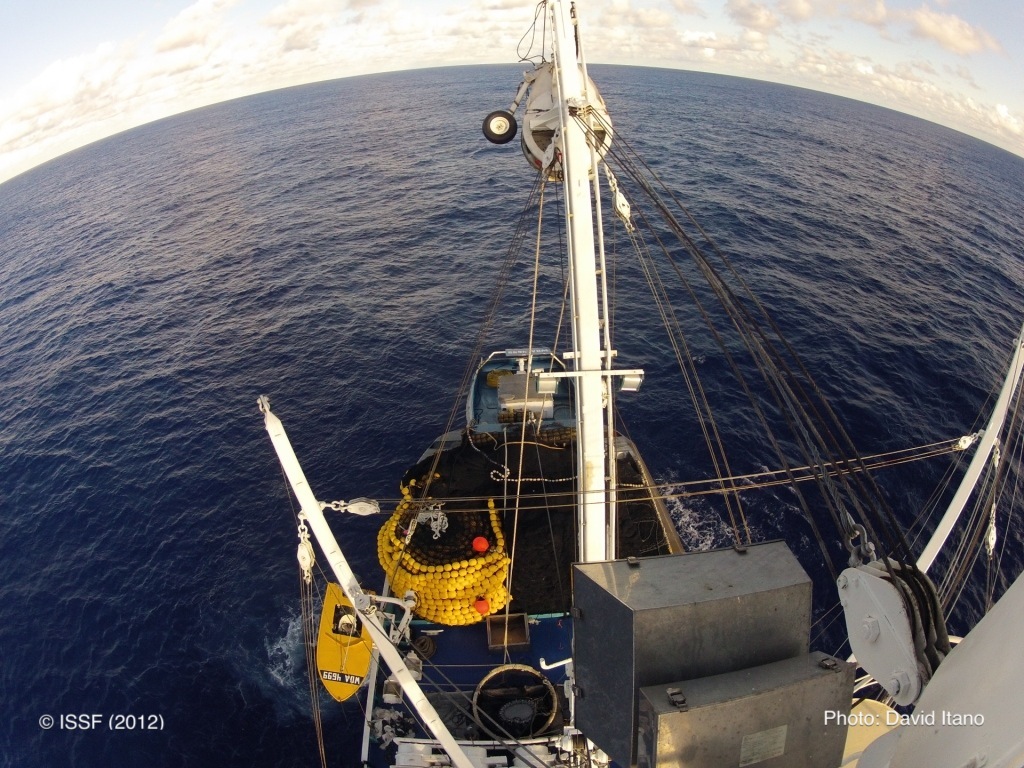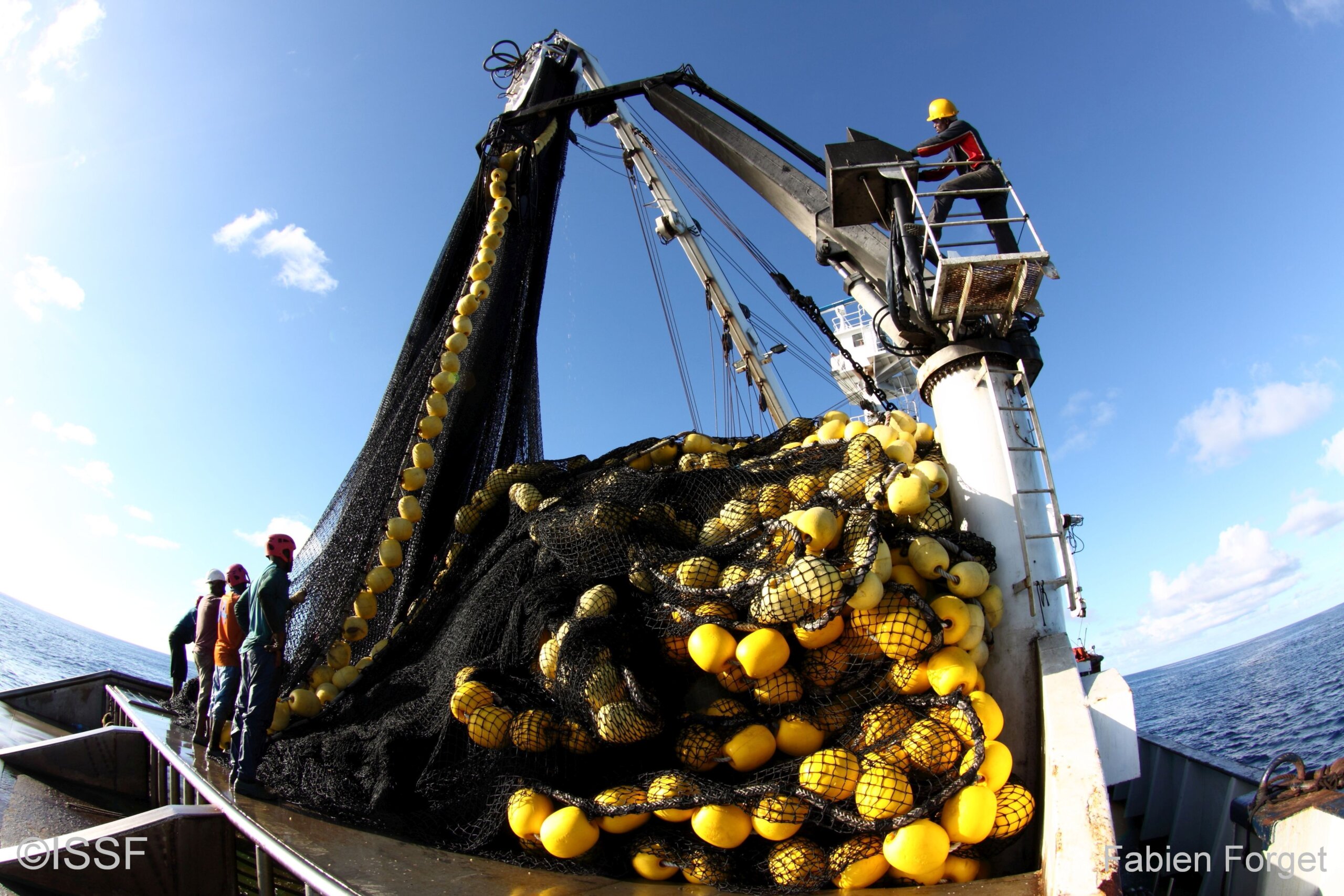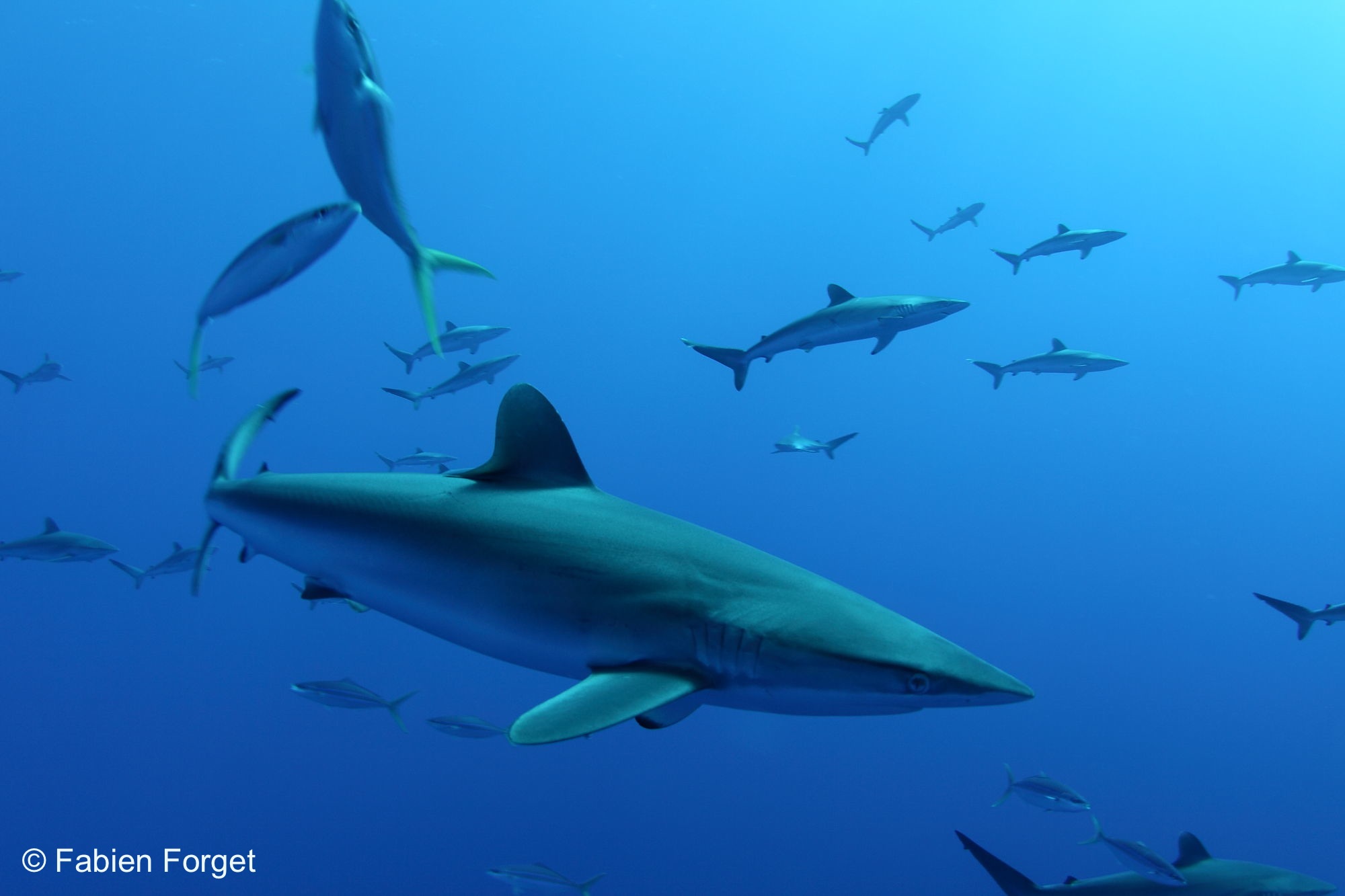
ISSF Report Analyzes Purse Seine Tuna Fishing Impacts on Sharks, Rays, and Other Species
Using data from Regional Fisheries Management Organizations (RFMOs), scientific observer programs, and its own at-sea research and skippers workshops, the International Seafood Sustainability Foundation (ISSF) has published an updated report that documents purse-seine tuna fishing’s impact on “non-target” species. The bycatch species covered in the report are sharks, whale sharks, rays, finfish, sea turtles, and billfish. While they are not bycatch species, the report also touches upon catches of undesirably small bigeye and yellowfin tunas.
Organized by species and including graphics and a full bibliography, “ISSF 2017-06: A Summary of Bycatch Issues and ISSF Mitigation Activities to Date in Purse Seine Fisheries, with Emphasis on FADs”:
- Identifies issues of concern for each species
- Summarizes the effectiveness of different bycatch-mitigation practices — at different stages of fishing operations — for either avoiding non-target species or reducing their mortality when caught
- Describes ongoing ISSF bycatch research activities
- Lists existing RFMO measures for minimizing bycatch
“A Summary of Bycatch Issues” is intended to be a useful reference for fishers and tuna companies, scientists, regional fisheries management organizations (RFMOs), government agencies, nongovernment organizations (NGOs) including conservation groups, and others interested in helping fisheries to be more sustainable.
Report Data and Insights Can Guide Conservation Efforts
The November 2017 report, authored by ISSF staff and collaborating scientists Victor Restrepo, Laurent Dagorn, David Itano, Ana Justel-Rubio, Fabien Forget, and Gala Moreno, is an update of a 2014 publication.
Not all non-target species are equally vulnerable to becoming bycatch in purse-seine fisheries, and bycatch rates for a single species can vary across oceans. For some species, other fishing methods have higher bycatch than purse-seine fishing. Here are some key findings in the report:
- SHARKS: 90% of sharks that become entangled in FAD nets in purse-seine fisheries are silky sharks (Carcharhinus falciformis); the oceanic whitetip shark ( longimanus) is another bycatch species. By avoiding setting on small schools of tuna (e.g. < 10 tons) around FADs, fishers could significantly reduce their catches of silky sharks by 20% to 40%, depending on the ocean.
- WHALE SHARKS: Whale shark (Rhyncodon typus) interaction rates with purse seiners are very low: The Western and Central Pacific Fisheries Commission (WCPFC), for example, recorded a set encounter rate of 0.94%. But any whale shark fishing mortality is a concern due to their life history and ecological significance. Time/area fishing closures do not appear effective for avoiding catching whale sharks, but best practice guidelines for their release exist.
- RAYS: Rays are not common bycatch in purse seine fisheries, at less than 0.1% by weight, and are mostly caught in free-school sets. Release from the deck is a viable alternative to release from the net. Fishers should avoid using hooks, wires or tightening slings and lifting or dragging by the gill slits or cephalic lobes.
- SEA TURTLES: Sea turtles are caught in very small numbers by purse seiners, with most (greater than 90%) released alive relatively easily. Using non-entangling FADs can prevent turtle entanglement.
- UNDESIRABLY SMALL BIGEYE AND YELLOWFIN TUNAS: Bigeye and yellowfin are not considered non-target species. Nonetheless, FAD fishing for skipjack stocks can result in higher catches of small bigeye and yellowfin, which can contribute to their overfishing. The species’ slower growth rates, higher longevity and higher age at maturity increase vulnerability to fishing. Mitigation efforts being evaluated include: adjusting the relative prices of small bigeye and skipjack tuna; setting species-specific quota; temporarily closing to fishing some areas of high concentrations; or managing the number of fishing sets on floating objects.
ISSF on Bycatch Mitigation
Since its inception in 2009, ISSF has dedicated resources and efforts to understanding bycatch issues in tuna fisheries (see “Related ISSF Activities” sections in the report). In addition to publishing scientific reports, ISSF hosts bycatch-mitigation workshops and publishes guidebooks and videos for skippers and other stakeholders. The Foundation also advocates science-based, mitigation measures to RFMOs through meetings and side events, position statements, and joint letters.
Commercial vessels catch about 4.7 million tons of tuna annually. Purse-seine vessels dominate large-scale tuna fishing, harvesting about 64% of the tropical tuna catch (skipjack, yellowfin, and bigeye tuna). Many purse seiners use Fish Aggregating Devices (FADs) or other floating objects to attract tuna to their nets, although they also may pursue sets on free-swimming tuna schools. More than half of the total tropical tuna landings globally are made by sets on FADs or other floating objects.
Bycatch occurs across most major tuna fishing methods — including longline, gillnet, and troll — and all fishing methods can affect the marine environment in multiple ways beyond bycatch.
“ISSF 2017-06: A Summary of Bycatch Issues and ISSF Mitigation Activities to Date in Purse Seine Fisheries, with Emphasis on FADs” can be downloaded from the ISSF site.
For more information on tuna stock health, see ISSF’s Status of the Stocks. For more information on FAD fishing and bycatch, see ISSF’s Questions and Answers about FADs and Bycatch.


